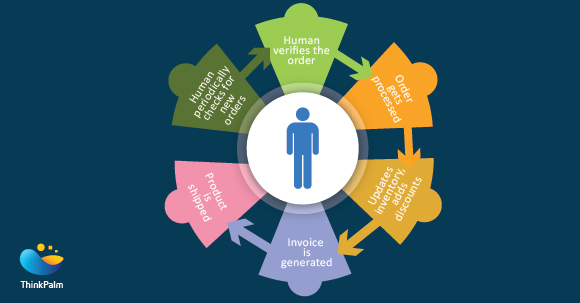In today’s world, we can see automation enabling users to accomplish a wide range of tasks everywhere, like checking luggage at the airport, ordering food, booking a hotel room etc. AI is being applied in various fields and is improving at a rapid pace due to programs that perform automated tasks on human’s behalf. Applications of AI currently range from simple chatbots to self-driving cars, the simplest being the photo tag suggestions that appear on Facebook photos. Google, Bing and other search engines also employ AI through web crawlers, which are examples of sophisticated bots.
Artificial Intelligence
The term Artificial Intelligence (AI) has been around since Allen Newell, Herbert Simon, and Cliff Shaw wrote the Logic Theorist, the first artificial intelligence program made to mimic the problem solving skills of a human being in the 1950s. Developing systems that equal or exceed human intelligence is at the core of artificial intelligence. While simple bots can automate tasks and increase efficiency, to take care of advanced activities which require intelligent and informed decision making, we need technologies like RPA. Robotic process automation (RPA) includes intelligent automation using real time self-learning techniques like predictive analytics and cognitive computing. It encompasses Artificial intelligence, machine learning and speech recognition, thereby creating what can be called as self-learning bots. The breakthrough technology is expected to simplify and digitize major business processes, and also increase self-learning capabilities.
Goals of AI
The goals of AI include deduction, representing knowledge, planning, processing natural language (NLP), perception, learning etc. Long-term goals of AI research include achieving creativity, social Intelligence, and general (human level) Intelligence. It should be able to generate accurate responses and process, parse, integrate, and rapidly reason like human knowledge in natural language text.
How Bots Work
A cognitive bot learns by observing people at work. It is achieved by constantly and repeatedly analysing the processes, corrections and transactions of the employer by the bot. The bot thus gains the knowledge to process the incoming data and think and perform the suitable action, getting smarter and more accurate over time. It automatically extracts the data needed for decision making and continuously learns from employer’s feedback. It uses NLP, ML, knowledge representation, reasoning, massive parallel computation and Rapid Domain Adaptation.
To create a self-learning bot, one should go beyond basic AI and progress into Machine Learning. Machine Learning uses algorithms to process incoming data, learn about it and then determine what to do with it. After Machine Learning, the next step is to move into Deep Learning (DL), a more advanced version of Machine Learning. Deep Learning breaks down language in ways that make ‘human level’ chatbot conversation seem possible. In this phase, neural networks come into the act and use it to progressively conclude on a single probability of accuracy. As an example, the final output of a neural net might be: “This input is 90% likely to be a support request”.
How Bots Help Us
- Analysis data and reports it periodically
- Performs repetitive tasks such as processing a particular type of transaction
- Imports/exports data between systems
- Processes swivel chair data entry
- Enters data to forms, creates, edits and retrieves data from databases
- Executes email campaigns, follow up, tracking and archiving
Advantages of Bots
- Bots increase productivity
- Produce accurate and high quality results
- Rarely makes mistakes and are reliable
- Work 24 hours without fatigue and breaks
- Greater quantity of work in lesser time
Challenges in Programming Bots
The challenges and possible problems in AI-powered applications are:
- Identifying and perfecting all the algorithms needed
- Collecting significant input data to train the bots
- Managing bot behaviour when input data is new – bots should be made capable to repeat tasks even when the data inputs are unfamiliar. This means, the bots should be monitored and trained constantly through improved algorithms.
In the coming years, it shouldn’t come as a surprise if business process management gets transformed completely by Robotic Process Automation and Artificial Intelligence.





